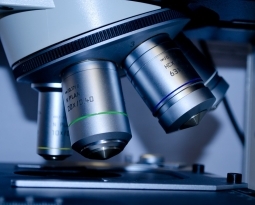Wisconsin Patent of the Month – January 2024
Catalytic Combustion Corporation (CCC) was founded to bring new emission control system technologies to market, helping to remove harmful substances and reduce noise from process exhaust. The company develops technologies to suit the needs of any industry, ranging from household appliances to large manufacturing plants. With this expertise, it is no surprise to see the company has been granted a patent for their selective catalytic reduction system (SCR).
The SCR system was designed to treat exhaust systems via ammonia (NH3) injections. At the heart of this invention is a meticulous system comprising a NOx sensor and an NH3 sensor, strategically positioned to read distinct portions of the exhaust flow. The NOx sensor analyzes a segment that has passed through an oxidation catalyst, while the NH3 sensor assesses a pre-catalyst portion. What sets this invention apart is its dosing logic – a non-transitory machine-readable storage medium containing executable dosing logic. This logic corrects NOx sensor readings using data from the NH3 sensor, ensuring precise and real-time adjustments to the amount of liquid reduction agent injected into the exhaust stream.
The method of controlling the dosing system is equally ingenious. By obtaining sensor readings from both the NOx and NH3 sensors, correcting NOx sensor readings with NH3 sensor data, and subsequently adjusting the injection of the liquid reduction agent, this method guarantees a level of control and accuracy previously unparalleled in emissions control systems.
The incorporation of a non-transitory machine-readable storage medium adds a layer of sophistication to the dosing logic. This storage medium is the brain behind obtaining, correcting, and adjusting – orchestrating a symphony of responses that optimize the reduction of nitrogen oxides in the exhaust stream.
CCC’s SCR closed-loop control system is not just an incremental improvement; it’s a revolutionary leap in emissions control. By utilizing dual feedback sensors for NOx and NH3 slip, this system offers real-time correction, ensuring that the NOx measurement is not only accurate but also consistent. The linearization achieved through the oxidation catalyst housing, aptly termed the “linear box”, adds an extra dimension of precision, making the NOx sensor’s signal truly proportional to the real NOx value in the stack.
This innovation is poised to make a significant impact on emissions control across various applications, from diesel engines to turbines and boilers. The elimination of costly analyzers, sensors, and sampling probes simplifies the system, making it not only effective but also economically viable. As emission standards continue to tighten, CCC’s SCR closed-loop control system emerges as a beacon of hope, providing a reliable and efficient solution to the challenges posed by evolving environmental regulations.
Are you developing new technology for an existing application? Did you know your development work could be eligible for the R&D Tax Credit and you can receive up to 14% back on your expenses? Even if your development isn’t successful your work may still qualify for R&D credits (i.e. you don’t need to have a patent to qualify). To find out more, please contact a Swanson Reed R&D Specialist today or check out our free online eligibility test.
Who We Are:
Swanson Reed is one of the U.S.’ largest Specialist R&D tax advisory firms. We manage all facets of the R&D tax credit program, from claim preparation and audit compliance to claim disputes.
Swanson Reed regularly hosts free webinars and provides free IRS CE and CPE credits for CPAs. For more information please visit us at www.swansonreed.com/webinars or contact your usual Swanson Reed representative.

















